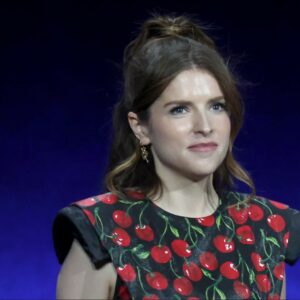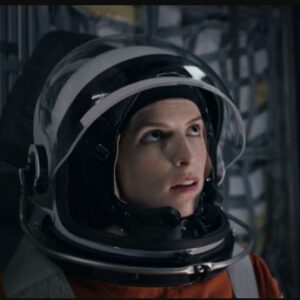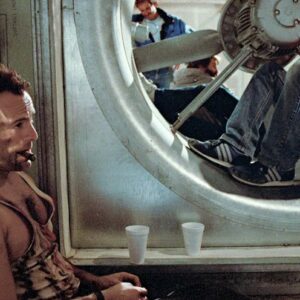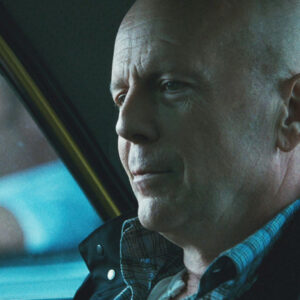Ryan Gosling, a name synonymous with charm and versatility, has become one of the most sought-after actors in Hollywood. His journey from a child star on “The Mickey Mouse Club” to an Oscar-nominated leading man is a testament to his talent and dedication. But what goes into landing a role for someone like Gosling? Let’s explore the behind-the-scenes efforts and strategic moves that have shaped his illustrious career.
Early Beginnings: The Formative Years
Ryan Gosling’s career began at a young age. Born on November 12, 1980, in London, Ontario, Canada, Gosling’s early exposure to the entertainment industry came through his role on the popular children’s show “The Mickey Mouse Club,” where he joined the ranks of fellow future stars like Britney Spears, Justin Timberlake, and Christina Aguilera. This initial foray into acting provided him with valuable experience and a taste of the spotlight.
However, it wasn’t just luck or a star-studded cast that propelled Gosling’s early career. His work ethic and natural talent were evident even then. Despite being just a child, Gosling demonstrated a maturity and depth in his performances that set him apart from his peers. This early promise laid the groundwork for a career that would see him take on increasingly complex and varied roles.
Transitioning from Child Star to Leading Man
The transition from child actor to leading man is notoriously challenging, and Gosling’s path was no exception. After leaving “The Mickey Mouse Club,” he faced a period of relative obscurity. His next major break came with the television series “Breaker High,” followed by the more substantial role in “Young Hercules.” These roles were significant in building his acting chops and helped establish him as a serious actor in the making.
Gosling’s breakthrough came with the critically acclaimed film “The Beloved” (2001), which showcased his ability to convey deep emotional complexity. However, it was his role in the 2004 indie hit “The Notebook” that truly catapulted him into the Hollywood A-list. In “The Notebook,” Gosling played Noah Calhoun, a role that required him to blend intensity with vulnerability. The film’s success and Gosling’s compelling performance earned him widespread recognition and solidified his reputation as a talented actor.
Strategic Role Choices and Artistic Growth
One of the key aspects of Gosling’s career is his strategic approach to selecting roles. Rather than opting for conventional choices or chasing commercial success, Gosling has consistently chosen projects that challenge him and showcase his versatility. This strategic approach can be traced back to his decision to take on roles that were far removed from the typical Hollywood fare.
For instance, his role in “Lars and the Real Girl” (2007) was a daring choice. Gosling portrayed Lars Lindstrom, a man who develops a romantic relationship with a life-sized doll. This unconventional role demonstrated his willingness to take risks and his commitment to exploring the depths of human emotion. The film was a critical success and further cemented Gosling’s reputation as an actor willing to push boundaries.
Similarly, Gosling’s collaboration with director Nicolas Winding Refn on “Drive” (2011) and “Only God Forgives” (2013) showcased his ability to work within the gritty, stylized world of crime dramas. In “Drive,” Gosling’s portrayal of a nameless stunt driver with a dark side was both haunting and mesmerizing. The film’s success, coupled with Gosling’s magnetic performance, solidified his status as a leading man capable of bringing depth and nuance to complex characters.
The Impact of Collaborations and Directorial Choices
Another significant factor in Gosling’s career has been his choice of collaborators. Working with talented directors and co-stars has played a crucial role in shaping his career trajectory. For example, his partnership with director Damien Chazelle on “La La Land” (2016) was a major milestone. In this film, Gosling played Sebastian Wilder, a jazz musician striving to make it big while navigating a romantic relationship with aspiring actress Mia, portrayed by Emma Stone.
“La La Land” was a critical and commercial success, earning Gosling an Academy Award nomination for Best Actor. The film’s success can be attributed not only to its vibrant musical numbers and compelling narrative but also to the strong chemistry between Gosling and Stone, as well as Chazelle’s direction. This collaboration highlighted Gosling’s ability to excel in a musical setting, showcasing his versatility and further expanding his range as an actor.
Gosling’s directorial debut, “Lost River” (2014), also demonstrated his artistic vision and commitment to storytelling. While the film received mixed reviews, it was an important step in Gosling’s evolution as an artist. Directing allowed him to explore his creative instincts and gain a deeper understanding of the filmmaking process, which in turn has influenced his choices as an actor.
Navigating the Press and Public Image
In addition to his roles and collaborations, Gosling’s management of his public image and interactions with the press has played a significant role in his career. Unlike some of his contemporaries, Gosling has maintained a relatively low profile, avoiding the pitfalls of excessive media scrutiny. His preference for privacy has allowed him to focus on his craft without the distractions that often accompany high-profile fame.
Gosling’s approach to interviews and public appearances reflects his desire to let his work speak for itself. While he occasionally engages in promotional activities, he tends to avoid the spotlight when it comes to personal matters. This deliberate choice has helped him maintain an air of mystique and has contributed to his enduring appeal.
The Role of Awards and Critical Recognition
Awards and critical recognition are often seen as markers of success in Hollywood, and Gosling’s career has been marked by both. While he has not won an Academy Award, his numerous nominations, including those for “Half Nelson” (2006), “Blue Valentine” (2010), “La La Land” (2016), and “First Man” (2018), highlight his consistent excellence and the industry’s acknowledgment of his talent.
Gosling’s ability to secure nominations and critical acclaim demonstrates his skill in choosing roles that resonate with both audiences and critics. These accolades not only boost his career but also reinforce his reputation as one of the most talented actors of his generation.
The Future of Ryan Gosling: What’s Next?
As of now, Ryan Gosling’s career shows no signs of slowing down. His upcoming projects and continued commitment to exploring diverse roles suggest that he is poised to further cement his place in Hollywood. Gosling’s willingness to take on challenging and unconventional roles indicates that he will continue to push the boundaries of his craft.
In addition to his acting career, Gosling’s ventures into directing and producing suggest that he is keen on shaping the future of the entertainment industry. His creative vision and dedication to storytelling will likely influence his future projects and collaborations.
Conclusion
Ryan Gosling’s journey from a child star to an acclaimed leading man is a testament to his talent, dedication, and strategic approach to his career. His ability to navigate the complexities of Hollywood, make thoughtful choices, and maintain a strong public image has solidified his status as one of the industry’s most respected actors. As he continues to take on new challenges and explore different facets of his craft, Gosling’s impact on film and television will undoubtedly endure for years to come.





